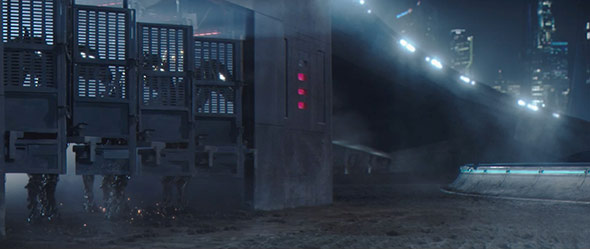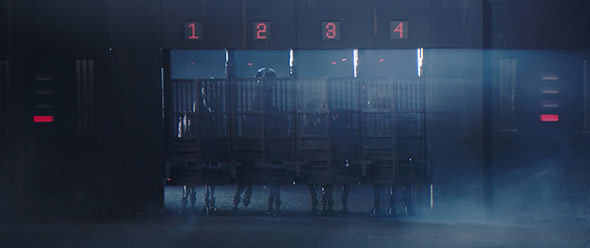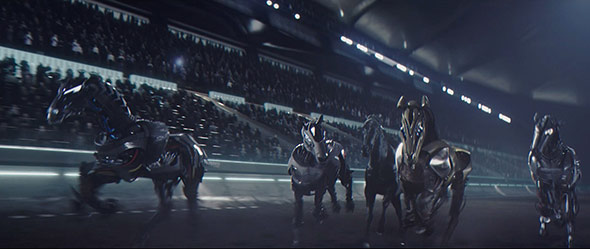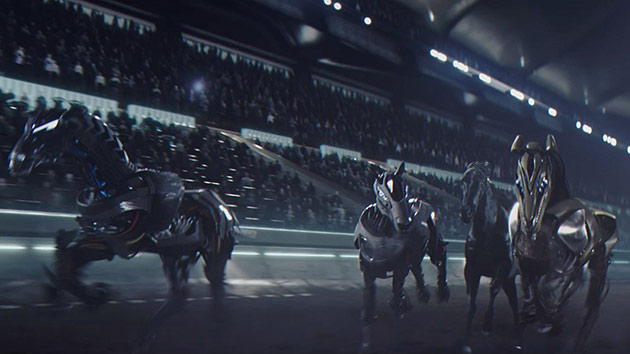MPC (Moving Picture Company), a global leader in VFX, has been crafting spectacular visual experiences for high-end feature film and advertising for over 25 years.
For the MPC Advertising team, collaboration and the need for a fast, effective project management system led them to adopt ftrack, an exciting new production tracking toolset for VFX.
Being able to work efficiently and collaborate in a quick and smart ecosystem is really important for their teams. Jonathan Vaughn is head of effects and CG supervisor at MPC LA. Since he joined more than a year ago he’s been actively investigating new technologies that continue to improve the way they work.
“That’s why we looked into ftrack,” says Vaughn. “Someone in our lighting team said that they knew someone that knew someone that uses ftrack. Once I looked into it, I said, yeah we need to look at this and evaluate it. And after that I was just sold!”
Communication in commercials
There is often a high volume of work going through the MPC pipeline, many of them CG heavy, with multiple teams working on shots in both the LA and Bangalore offices.
“On advertising projects having the organization in place to ensure they run smoothly is so important,” notes Vaughn. “Often our timeline on a project could be two or three weeks and during that time, a lot of assets are created. With the nature of our work, we don’t want any assets to get misplaced and its essential to have an easy method of tracking items and what is going on”.
He believes that’s the real strength of ftrack. “It has easy-to-access place where everyone can go in and view all the assets in a simple format. Not only in one location, but to be able to globally keep on top of exactly what everyone is doing is just priceless.”

Racing ahead with ftrack
One of the projects that MPC has already run through ftrack is the CG heavy Acura “Let the Race Begin” spot. In the ground breaking commercial, tension builds as a stable of mechanical horses burst out of the starting gates and race around a jam-packed arena.
Mike Wigart is Deputy Head of Production at MPC LA, and put ftrack through its paces on the Acura project. Speaking of ftrack’s use on the project Wigart says: “It's designed to organise, so it was incredibly easy to implement as a production tool."
The commercial gains momentum and there is a true ‘chariots of fire’ style face off between mechanical horse and a newly transformed real life horse, before it climaxes with the appearance of the new Acura model.
This was a particularly CG-heavy spot and the team were pushing hundreds of assets through it. He continues: “Version control became much easier with ftrack — there was never any confusion about which version of the effects that lighters should be rendering. It's essential that these types of efficiencies are in place when you're working on VFX-driven ads on tight schedules.”
Ftrack is designed to handle large volumes of assets as well as aid the complicated communications challenges of advertising work. “On this Acura spot, we were kicking out tons of volumetrics, loads of interactive dirt and debris, and then of course the robot horses,” says Wigart.
The team at MPC has set-up the system with asset dependencies so they can see exactly which asset versions contributed to the final deliverable and target fixes appropriately. “We had it set-up so that the metadata in a render could tell us ‘animation version two, of horse number one was used’. That kind of information was crucial to the team as they were several updates in the animation on this spot. Nothing slips through the cracks." He adds, "All of this information was available in real-time across all MPC sites. It's very powerful stuff!"

Getting set up
One of the most daunting things about taking on a new toolset, especially for something as key as the project management in VFX, is the set up time. Once MPC had decided to integrate ftrack into the department and had experimented with it on a couple of test projects – they were surprised by just how incredibly quick it was to get up and running.
Part of their concern was around interoperability with other software. The team uses a range of solutions to generate its 3D assets and plates so making sure ftrack worked well with these was really important. To help facilities and users deal with this, ftrack comes with a range of connector plug-ins as standard. “Thank goodness for those,” notes Vaughn. “During the test phase, we were able to use those as a reference point and as a result we were publishing, gathering assets and updating in ftrack within a week. We even had Houdini integrated into ftrack in just two weeks. It was just such an easy API for us to dig into and wrap our heads around.”
And that was just the start. Since then the team have got MARI and Mudbox plugged in and to a certain extent even have a little Flame work-around. “That’s just something that we didn’t have before. It’s that kind of flexibility as well as the user-interface of the toolsets and how people can interact with it that just made it the best solution for us. It just made everything so easy and intuitive for the artists.”
Another important part of bringing in a new system is being confident that artists will be able to use it without having to spend multiple days in training. At selected times MPC will bring in talented and regular freelancers to help them ramp up on a project. “Previously I’d have to dedicate at least a day getting people up to speed. Now I can bring in a freelancer, and within 10 minutes of their arrival and reading the wiki on ftrack, they can be up and running, using all of our publishing tools through ftrack. That just saves me so much time and money.”

Actions. A killer feature
Vaughn and his team are particularly big fans of the Actions or Custom Callback feature in ftrack. Actions can be used to add custom functionality that can be written using its open and flexible Python API.
“Being able to set up your own Action for an asset that automatically checks it into our 3D assets archive is just awesome.” One of the popular Actions the MPC team has created for artists will ‘create the job on disk, look at the edit, pull the thumbnails, populate it and then log the assets.’
“These are just huge time savers and make it really simple to use,” he says. “One of the things that really sets ftrack apart right now is Actions and we feel like it’s only going to get better and better.”

Moving forward with ftrack
While they have not yet implemented the feature, the team are excited about the Locations feature in the latest version and will be looking to integrate that into its global workflow in the next six months. “We will have a solution worked out to use locations so they can publish assets in the same way we do. I’m really excited about that. We just need to find some time to dedicate to develop it.”
Speaking of his experience with ftrack, Vaughn notes that he has been pleasantly surprised by the strength of the support coming from ftrack. “The forums are amazing and there is already a nice community. You can also really see that the company is reacting to the needs of users,” he concludes.
Looking to the future Vaughn can see ftrack’s potential on bigger projects like films. Beyond that “It could serve as your 3D assets database for archiving. It could produce all your jobs. The potential of it to handle just about everything you’re doing is there and I’m really excited about that.”
Topics: Press Release City ftrack
Did you enjoy this article? Sign up to receive the StudioDaily Fix eletter containing the latest stories, including news, videos, interviews, reviews and more.
